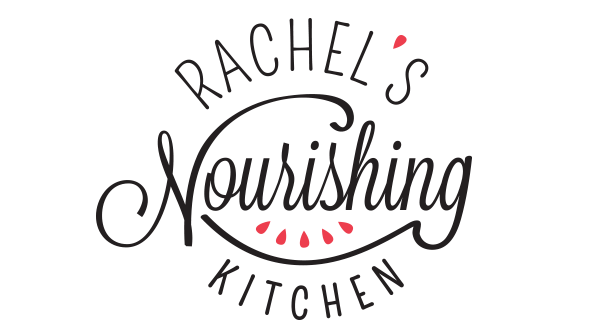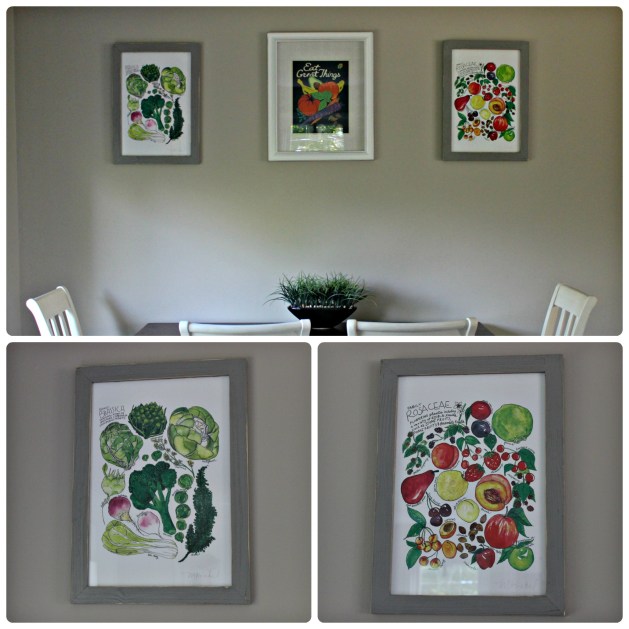Imagine if Whole Foods and just about every natural food store you know of had a trade show and you got to sample something from every vendor.
That’s pretty much what happens at the Natural Products Expo each year, and it’s like trick-or-treating for food nerds like me. Thousands of health practitioners, retailers, wholesalers, press, and bloggers come from all over North America and even beyond to get the scoop on the latest trends in the natural products industry. The show just so happens to be held in Baltimore, my hometown, so I have a 25 minute drive to get from my driveway to the expo.
It’s awesome.
As a blogger who writes about these products, I have the opportunity to attend each year, and it’s always one of the highlights of my fall. I share what I find with all of you and often sample and feature these products in the workshops and cooking demonstrations I teach at companies. As many of you know, I have a gluten-free, dairy-free focus in my food choices because of what I’ve found makes my body feel its best. Expo is a great place to go to find out what’s coming soon, so I can fill you in ASAP. I had fun hanging out with Elyza Dolby and Colleen Howell. Expo is even better when you go with friends!

Each year, I notice a few trends that tend to characterize the expo, and I bring them back to you to make your life easier, better and more delicious. I focus on dairy-free and gluten-free options as well as upgrades to on the go meal and snack foods and some supplements and herbal remedies worth considering!
*Friends, I want to offer this one caveat before I share my updates and trends with you. Regardless of what the trends are, I still focus my eating around my whole foods – mostly plant-based, full of colors, packed with nourishing fats, protein and fiber. To learn more about what matters most to me and what my personal food philosophy is, I’ve got you covered here.*
**If you want to know where these products are sold near you, go to the product’s website and look for the “Store Locator” or “Find Me Near You” page on their site and search by zip code.
RNK’s Top Expo East Trends & Finds
On-the-go nourishment is getting easier and more delicious.
I’ve written before about my top tips for eating healthy on the go, and I’m excited to see so many companies finding ways to prioritize both food quality and convenience. Whether it’s breakfast, lunch or dinner on the go, it’s easier than ever to eat well, even when you’re busy.
Some of my favorite newbies to the scene are Purely Elizabeth oatmeal cups (less than 5 grams of sugar per container, which is wayyyy less than most on the go oats), Sprout Living drinkable oats (try the spice or mocha flavors!), Wildscape frozen meals (which are made with totally real food ingredients – they have one gluten-free and one vegan option), Grainful meals, and Path of Life frozen sides.
I was also excited to see the team from Swapples, one of our on-the-go breakfast staples, at Expo for the first time! We love their grain-free frozen waffles. They also won Best of Show at Expo East by Veg World Magazine! Congrats, Rebecca and team! 🙂





New snack bars are aiming for lower sugar.
I aim for a single digit sugar content in the bars that I buy, and the new ones coming to market fit the bill (or are like 1 gram off!). I’ve written previously about my top real food snack bars in this post, including what I look for in a bar (protein + fiber + low sugar), but I’ll need to update it with some new options from this year. Because I travel so much, I don’t always have the opportunity for a full sit-down meal, so sometimes snacking on a bar is my best option. (Hummus and veggies and trail mixes definitely work, too!)
This year’s bar standouts included Purely Elizabeth‘s granola bars (if you like her granola, you’ll love the bars!), Primal Kitchen‘s collagen bars, This Bar Saves Lives (eat for a cause!), evohemp cookie and brownie bars, and Enjoy Life’s allergen-free breakfast bars. For meat eaters, my hubby’s favorites for protein-rich bars that are also low in sugar are Country Archer Jerky Co. (Herb Citrus Turkey bar and Sweet BBQ Pork are his top two) and EPIC bars.




Mushrooms are cool and are being reinvented.
Whether it was in a zesty thai mushroom jerky or immune-boosting tinctures, teas, and hot chocolate mixes, mushrooms are in, and for good reason. I’ve written about the anti-cancer, immune-supportive properties of mushrooms in this GBOMBS post.
A few of my favorite mushroom-centric products are featured below. A few brands I love are Host Defense teas and immune-boosting sprays and drops (expect to see these in upcoming immunity workshops!), Four Sigmatic chocolate milk and latte mixes, Purely Elizabeth’s new grain-free granola bars, and Pan’s mushroom jerky, to name a few.



Beans, beans, good for your heart!
Whether it was a chickpea patty, hummus, chocolate-covered roasted chickpea or crunchy sriracha fava beans, beans showed up in droves this year. Beans have always been popular in the natural food community because of their high fiber and protein content, but it’s been fun to watch how the food industry has made them cool.
Here are some of my favorite bean-based products from Cedar’s Za’atar hummus, Enlightened roasted fava beans (soon to be rebranded as “Bada Bean”), Hempe chickpea tempeh patties, and Hodo ready-to-eat Moroccan-spiced tofu bites (good enough to convert any tofu hater).



Dairy-free cheeses have come a loooong way.
When I found out that dairy was a trigger for a range of health issues for me – from bloating and reflux to bronchitis and ear infections – I removed it from my diet and felt better within weeks. Since then, I’ve tried a variety of options for dairy-free yogurts, cheeses, chocolate, milks, ice cream, and other dairy-based products and have found some options that I really enjoy. For now, I’m just going to focus on the cheeses because, let’s be honest, they’re the hardest thing to change when going dairy-free.
A few cheese brands and products I love are Parmela Creamery (their nacho nutcheese is amaaaazing), Miyokos‘ Cheers to Cheddah (Wispride spreadable cheese fans, anyone?), and Treeline Cheese’s new Maple Walnut flavor coming out this fall.




Dairy-free milks and creamers are leveling up.
Next to cheese, I find that milk and coffee creamers are one of the things people really struggle to go without when eliminating dairy. Fortunately, there are so many options that will not make you feel the least bit deprived!
A few of my favorites are Oatly oat-based milk, Milkadamia macadamia nut-based milks and creamers, nutpods dairy-free coffee and tea creamers and Know Brainer‘s ketogenic (to learn more about keto, read this) creamers. Forager Project is rebranding their products with a green label, so be on the lookout for their yogurts and nut milks. Their full fat yogurts are also delicious!




Gut-friendly foods are everywhere.
From sauerkrauts and kombucha to apple cider vinegar drinks, gut-friendly foods continue to surge, which has been a trend for the past few years. More and more people are focusing on improving digestive health, and with good reason. I’ve written previously about my top ten tips for optimizing gut health in this blog post.
From Buchi’s Kombucha‘s new Kefir Soda (less sugar than kombucha and a pleasant fizz!) and Cleveland Kraut‘s single-serve kraut packets, to Good Belly probiotic shots, and Bonafide Provision and Brodo‘s restorative broths.
My favorite local purveyor of fermented foods is still Hex Ferments in Baltimore, but if you’re outside of this area, try one of the brands above.




Purity of ingredients is paramount.
When it comes to packaged foods, it’s often easier to sacrifice purity of ingredients in order to optimize flavor or preservation. That’s why I’m excited to see so many companies committed to ingredient quality and simplicity. The shorter the ingredient list and the more easily I’m able to pronounce the ingredients, the more likely I am to buy it.
A few of my favorite finds in this category were Primal Kitchen’s ketchup, Jilz gluten-free crackers (holy cow, these were amazing and would be delicious with the hummus or cheeses mentioned above), Cappello’s gluten-free sweet potato gnocchi (omg), and Wildscape and Grainful frozen meals.



Chocolate is getting even better.
You know that shellac that you usually see on chocolate-coated candies? You won’t find it on Hu Kitchen’s new chocolate-dipped cashews and goji berry bites. These were two of my favorite new products at the expo this year. The tartness of the goldenberries combined with the richness and bite of dark chocolate were a killer combo. They should be in stores by Q1 2019.
Some of my favorite chocolate treats were Eating Evolved chocolates, Theo turmeric spice chocolate bar, Hu chocolate-covered hunks, and Better Bites chocolate covered cookie dough bites (these are definitely a special treat!). For a full round-up of my favorite dairy-free chocolate bars, check out this post.



Monk fruit is the new stevia.
Artificial sweeteners often get a lot of flack because of their negative side effects. One of the benefits of the evolving natural products industry is that we are finding better options to things like equal and sweet and low. Monk fruit as a natural, zero-calorie sweetener with a glycemic index of 0, so it’s suitable for diabetics. It’s about 300 times sweeter than sugar. To learn more about monk fruit and other natural sweeteners that I recommend, read this post.
You can find monk fruit in evohemp and Primal Kitchen’s bars, Lakanto’s chocolate and a variety of other products. There were too many to name, but you will start noticing this sweetener shift in 2019!

Okay….and ONE MORE bonus one because I can’t help myself…
Supplements can be fun and not feel like a chore.
With gummies, sprays, and lozenge-style options, taking supplements doesn’t have to mean pill boxes full of tough-to-swallow horse pills. When I discovered I was clinically malnourished, I had to start supplementing to replenish what was lost. My body wasn’t able to properly break down nutrients because I’d been taking stomach acid blockers for a decade, so I turned to easy to digest supplements from the brand Nutrametrix.
While that may not be everyone’s situation, there are still some great options if you are looking for ways to make taking supplements more palatable. For those of you who are vegan, there is a high likelihood you will need to supplement with B-vitamins, especially B-12, so talk to your doctor about that. Many people are supplementing with turmeric these days because of its anti-inflammatory properties. Both B-12 and turmeric are now available in a fun and tasty gummy from Mega Food. Make sure your turmeric is combined with black pepper on the supplement label to optimize absorption.
If you are looking to boost your immune system, Beekeeper’s Naturals propolis throat spray is one of the top sellers on Amazon and a product I have used myself. They just introduced a NEW version for kids, so check them out on Amazon. 



Here are a few other trends I spotted that I haven’t found to be relevant to me but were really popular at expo, so I wanted to share them with you:
- CBD oil is in everything. From water and honey to gummies and supplements. So, What is CBD Oil? Cannabidiol (CBD) is one of the chemical compounds found in the marijuana plant that is known to calm the nervous system, among other things. It showed up at every turn at this year’s expo and is legal to consume in Maryland and in other states. This meant that there were some more out there products on display, like hemp water, which looks to be a really good way to intake the beneficial chemicals and nutrients from cannabis and CBD without the hassle, to name just one. After all, there are loads of ways that people take CBD and there are loads of reasons to why people take it. For example, you could check out something like these cbd sleep drops, which are obviously there to help you sleep. It can be used to calm you down, soothe pain and has many other benefits to some people. If you would rather not take sleep drops then there are many other alternatives that you could take a look at, as the most important thing is finding the thing that works best for you. So this might mean that you buy cbd gummies or something completely different. It’s just up to you though.
Which is why it is becoming increasingly popular for people. To learn more about CBD oil’s benefits and uses, click here. - Natural sleep aids are on the rise. It’s no secret that many of us struggle to get a good night’s sleep, which is why natural sleep aids are popping up everywhere from Som Sleep drinks to supplements.
If you’re not already hanging out with me over on Instagram, check out my page here. I share all of the latest and greatest food finds, recipes, blog posts and inspiration on that platform, and I’d love to connect with you!




















































